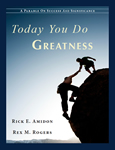- Details
- Written by: Rex M. Rogers
The Christian Church, capital "C," the Body of Christ or the Church Universal, exists today in the Middle East and North Africa. What this means is that indeed there are local Christian churches and local believers in every country in the region. Now some of these churches exist in hiding, "hidden believers" as Brother Andrew called them, but they are there. And their faith is amazing and resilient.
But the church is also, in some countries in the region, suppressed, repressed, oppressed, and at times persecuted. SAT-7, Christian satellite television in the region, broadcasts daily in Arabic, Farsi, and Turkish to the Church and to all who wish to view its programs.
Here's more on this vital subject:
© Rex M. Rogers – All Rights Reserved, 2012
This blog may be reproduced in whole or in part with a full attribution statement. Contact Rex or read more commentary on current issues and events at www.rexmrogers.com or follow him at www.twitter.com/RexMRogers.
Thinking About Megachurches
Expired- Details
- Written by: Rex M. Rogers
Megachurches qualify for the designation when attendance tops 2,000 people. The term was first used by megachurch researcher John Vaughn and later popularized in his 1993 book entitled Megachurches and America’s Cities: How Churches Grow. Now we’ve got the inelegant term gigachurch, a congregation of 10,000 or more in weekly services.
Now several churches top 20,000. Actually, Joel Osteen’s Houston-based Lakewood Church is listed at about 43,500. Next in the list is Second Baptist church, also Houston, at 23,659; North Point Church with Andy Stanley in Alpharetta, GA at 22,557; Willow Creek Church in Chicago with well-known megachurch leader Bill Hybels at 22.500; Lifechurch.TV in Oklahoma at 20,823; and West Angeles Cathedral in L.A. at 20,000. Purpose-Driven Life Pastor Rick Warren’s Saddleback Church just misses the 20,000-attendee club at 19,414.
There are now well over 1200 churches in the United States with weekly attendance figures regularly over 2,000, and most are growing. Before we get carried away with these grand numbers we should note that in South Korea some churches claim 250,000 regular weekly attendees. Mind-boggling.
So what should we think of this?
I’m not a megachurch researcher, much less an expert. I’m not necessarily “for” or “against” megachurches. I just get into some of them, see them as I travel, and witness how some of them present facilities, personalities, missions, etc.
As far as I can tell there’s nothing “wrong” with a church that attracts a large attendance. In one sense, they are simply outcomes of our age, along with “big box stores” like Walmart and Home Depot, huge businesses, again like Walmart, or Google, Apple, or Microsoft. “Big” is an attribute of our lives in part because there are more people on the earth than ever before, some 7.3 billion and growing.
I believe in liberty, i.e. that one can make one’s own choices, and I believe in free enterprise, i.e. that one is free to invest talent, time, and effort, create a service or product, and build something worthwhile. Churches can do this, or at least their attendees and leaders can. People choose to go where they get what they want, where what’s presented is presented well, if not excellently, and where it’s convenient or affirming for them to go. One reason churches grow is because they have a speaker that hits the ball and people choose to come back time and again. Nothing odd or “wrong” in this, unless of course the speaker or the church preach or teach theological error.
Beyond this I confess some megachurches make me uncomfortable. One reason is simply the facilities they require. Enormous, and I mean humongous, edifices—no, multi-edifices on campuses rivaling small universities. Having led one of those small universities and done a bit of fundraising I can say these facilities cost tens of millions of dollars and other millions to operate them. Some are nothing short of opulent. Is this “bad” or “wrong”? I can’t quite go there, at least not as a generalization. But I also know that facilities like this go well beyond what’s necessary for basic worship and fellowship. They absorb funds that could indeed go for a variety of other fund-starved needs and ministries.
Megachurches aren’t all good or all bad. Their appropriateness and effectiveness trace to the people who lead and attend them.
© Rex M. Rogers – All Rights Reserved, 2012
*This blog may be reproduced in whole or in part with a full attribution statement. Contact Rex or read more commentary on current issues and events at www.rexmrogers.com or follow him at www.twitter.com/RexMRogers.
Christian TV In The Middle East
Expired- Details
- Written by: Rex M. Rogers
Satellite television in the Middle East and North Africa, the region directly influenced in the past several months by the "Arab Spring," is a very powerful cultural influencer. Practically and technologically speaking, there is simply no other means available that is as efficient or as effective as satellite television in reaching 500+ million people in a region characterized by closed countries and illiteracy rates as high as 50%. In addition, people in the region tend to learn orally. In other words, they like to listen to and learn from stories, particularly ones they can view on TV.
Founded 16 years ago, SAT-7, a Christian satellite television ministry, tells wonderful stories about living life with the enablement of the gracious Sovereign God and His Word. SAT-7 broadcasts daily in Arabic, Farsi, and Turkish throughout 22 countries in the region, and its programs are known for their production quality, variety, and uplifting presentation of the Christian faith.
Here's more:
© Rex M. Rogers – All Rights Reserved, 2012
This blog may be reproduced in whole or in part with a full attribution statement. Contact Rex or read more commentary on current issues and events at www.rexmrogers.com or follow him at www.twitter.com/RexMRogers.
- Details
- Written by: Rex M. Rogers
My website has been upgraded – brighter, different colors, more easily readable font, new comment/feedback module, better back-end functioning. The work originally and this recent upgrade were completed by my son-in-law, Joe Drouillard of J D Web Design Studio.
The content management system is Joomla, which I like, now that I’ve learned a few basics. It can do much more, but I haven’t needed its full capacity so haven’t spent time on a learning curve. But what I can do gets the job done for me.
In my opinion, simple or fairly straightforward web designs are best. I don’t mean dull or boring designs, just designs and lettering that considers the viewer/reader’s eye and makes content as easily accessible as possible.
So, I recommend J D Web Design Studio to you. Joe does good work.
© Rex M. Rogers – All Rights Reserved, 2012
*This blog may be reproduced in whole or in part with a full attribution statement. Contact Rex or read more commentary on current issues and events at www.rexmrogers.com or follow him at www.twitter.com/RexMRogers.
The Lone Ranger Never Rode Alone
Expired- Details
- Written by: Rex M. Rogers
I grew up on “The Lone Ranger,” and all those other Westerns filmed in the 1950s and early 1960s. Loved them all, “The Roy Rogers Show” (along with Dale Evans), “The Cisco Kid,” “Have Gun, Will Travel,” “Gunsmoke,” “Rawhide,” "Hopalong Cassidy," and more.
What I didn’t know then was that many of these programs offered fairly admirable presentations of right versus wrong, moral choices in which the hero, at least, worked things out for the best in the end. This is, for the most part, long gone from television and cinema.
One thing in particular about The Lone Ranger—he never rode alone. His faithful and intrepid friend Tonto, the Ranger’s Indian sidekick, more than once got the Ranger out of trouble. Back in the day Indians-then, Native Americans-now, didn’t get much credit, but Tonto was a man for all seasons, a man “to ride the river with.”
None of us can really go it alone and those of us who try usually if not inevitably fall on our nose. Check this new article for more on the subject: “Even The Lone Ranger Didn’t Go It Alone.”
© Rex M. Rogers – All Rights Reserved, 2012
*This blog may be reproduced in whole or in part with a full attribution statement. Contact Rex or read more commentary on current issues and events at www.rexmrogers.com or follow him at www.twitter.com/RexMRogers.
Gender Confusion
Expired- Details
- Written by: Rex M. Rogers
So-called "gender issues" are synchronous, that is in time, with my adult life. I remember Women's Lib, bra-burning, and the ERA in the 70s. As I say this, I don't mean to imply that everything about these movements, actions, and legislation was wrong, bad, or misguided. In fact, I do not. But issues and movements tend to expand, sometimes beyond what the founders envisioned or even desired, sometimes to levels most would call extremes.
The phrases "gender issues" or "gender confusion" these days involves a lot of extremes well beyond the initial desire of reformers in the early 20th Century who worked to earn for women the right to vote and beyond what reformers in the late 20th Century wanted for women in equal pay for equal work, equal access, or simply equality in the marketplace of ideas, professions, and culture. Today gender issues involve what must be labeled sexual immorality at the least or perversion at the worst.
This video column scratches the surface of these issues with what amounts to an introductory comment:
© Rex M. Rogers – All Rights Reserved, 2012
This blog may be reproduced in whole or in part with a full attribution statement. Contact Rex or read more commentary on current issues and events at www.rexmrogers.com or follow him at www.twitter.com/RexMRogers.


